(in english) Different interpretations & Speed of boats
Different interpretations
Robert Philippe: Agrégé in history, supports the thesis that The Odyssey comes out of the Mediterranean. (N° 22 of the magazine Planète)
Gilbert Pillot: Hellenist, author of the "Secret Code of the Odyssey", imagines and searches for a route outside the Mediterranean.
Alain Bombard the well-known navigator, promoter of the rubber boat, supports the thesis of G. Pilot.
New proposals:
The boats of the Odyssey
What were the characteristics of these boats. The text of the Odyssey gives us some indications:
They are deep-sea cruisers. They can carry 52 rowers (data mentioned in the text of the odyssey). So there are 26 benches.
They are therefore 20 to 30 meters long.
Representations can be seen on ceramics, cups and vases.
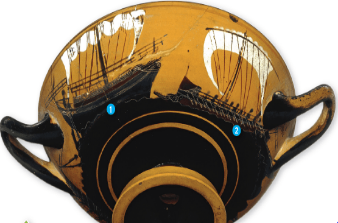
![]()
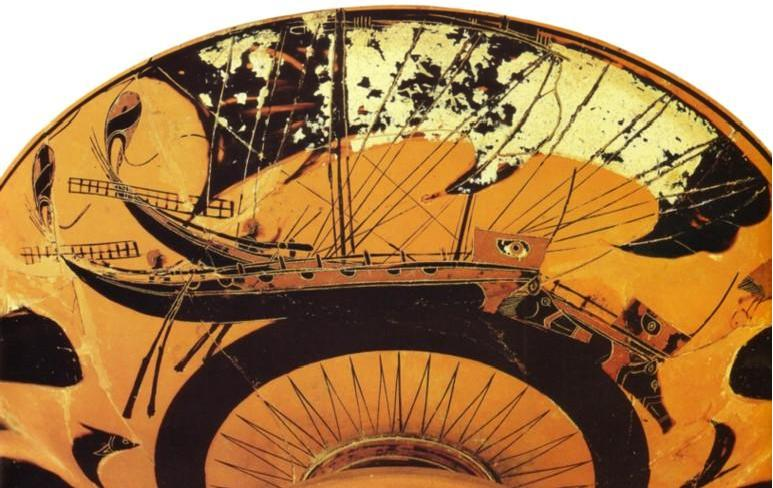
And it was made a reconstruction for the ship of the Argonauts, although with only 10 pairs of oars. Ulysses' boats were longer.
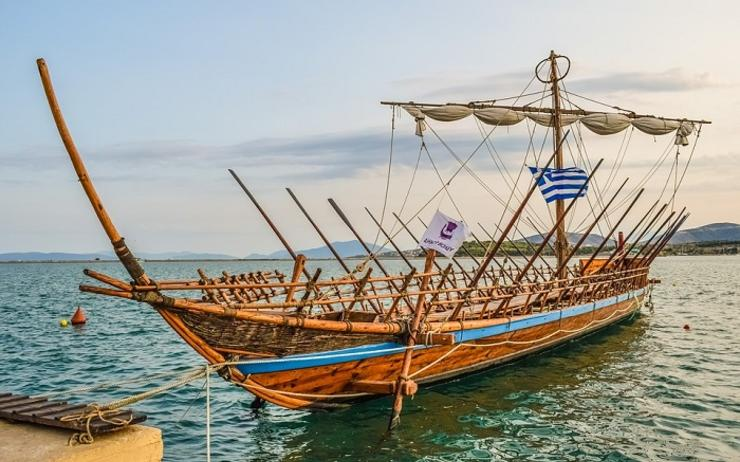
Daily speed and distances
Today, an empirical calculation formula makes it possible to define the maximum possible speed for a boat hull:
Critical velocity (knots) = 2.4 x Square root of waterline length
Either for a 16 m boat: 9.6 knots
Or for 20 m: 10.7 knots
And per 24 hours
at 10 knots the boat is 240 miles (444 Km)
or at 9 knots it is 216 miles
Here is an indication: the ships in question are therefore capable of sailing up to ten knots.
We notice that in the Odyssey the distances are expressed in days of navigation.
What for?
In our motor car civilization, if we ask the question: how long does it take to go, for example, from Avignon to Marseille, the answer will be: about 3/4 hour.
The answer is obvious to everyone, by car; These are supposed to travel at their maximum authorized speed, on the shortest lane, and, depending on the distance, we will respond accordingly.
Similarly among the Greeks, civilization of sailors, a day of navigation, it is with the wind in its sails and the sail that carries, to the maximum of the possible speed of the boats. Let us put 9 knots . And at that speed, you travel 216 nautical miles in 24 hours.
For proof:
Journey of Telemachus
Telemachus, the son of Odysseus, in the hope of having news of his father goes from Ithaca to Pylos the dunes, to go and meet Menelaus, the king of Sparta, who was companion of Odysseus during the Trojan War; There are 73 miles measured on the map, made from four hours after sunset, until dawn, or 8 hours on a night of 12 hours. This corresponds to a speed of 9 knots.
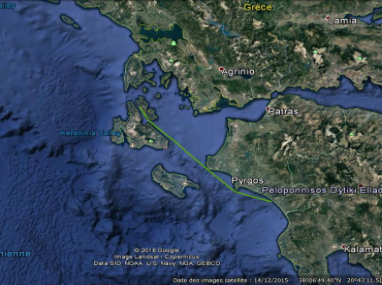
Story of Menelaus
These are only two sentences lost in the entire text of the Odyssey. But they are only understandable by assuming the speed of nine knots.
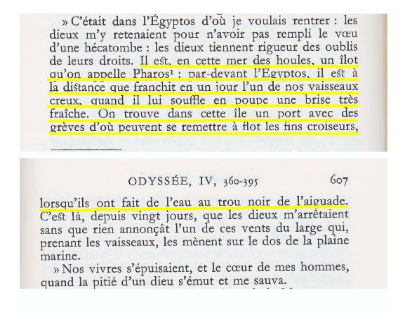
One day (24 hours) at 9 knots is 216 miles; only the island of Cyprus corresponds to this distance: it is 245 miles from Alexandria or 202 miles from Port Said.
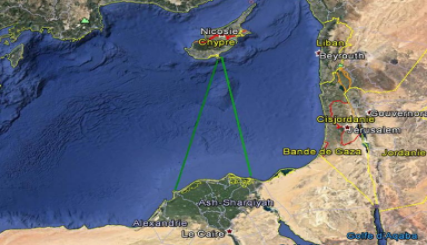
On the map, in the south of Cyprus, we see Nicosia, which nearby has a port, a beach to run aground, a aiguade, as described by Menelaus. …
![]()
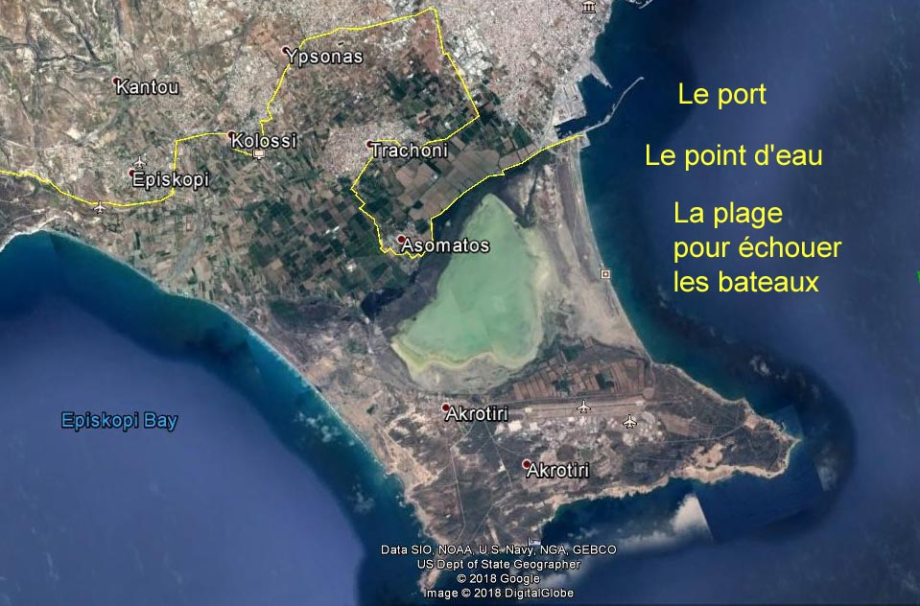
But we must assume an alteration of the text: Paphos instead of Pharos. Is this implausible in almost 3000 years of transmission?
And Pharos?
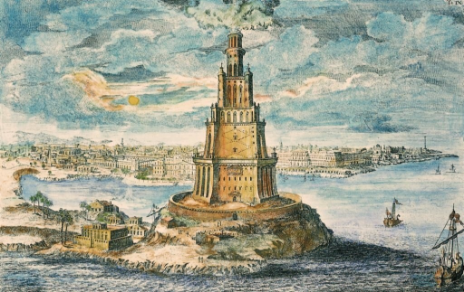
Destroyed for a long time, here is an artist's representation of what gave its name to all the lighthouses of the world: a rocky islet a few kilometers from Alexandria; not far enough, no port, no beach, no aiguade, in short not in accordance with the narrative
The journey from Scheria in Phaeacia (Corfu) to Ithaca
The ship of Alkinoos, king of Phaeacia, brings Odysseus back to Ithaca in one night of navigation. That is to say that he travels 90 miles in about ten hours: Ulysses has time, after sunset, to drink a last cup before boarding, to wake up before dawn, at the rise of Venus. (see pages 725 and 726 of the Pléiade edition)
![]()
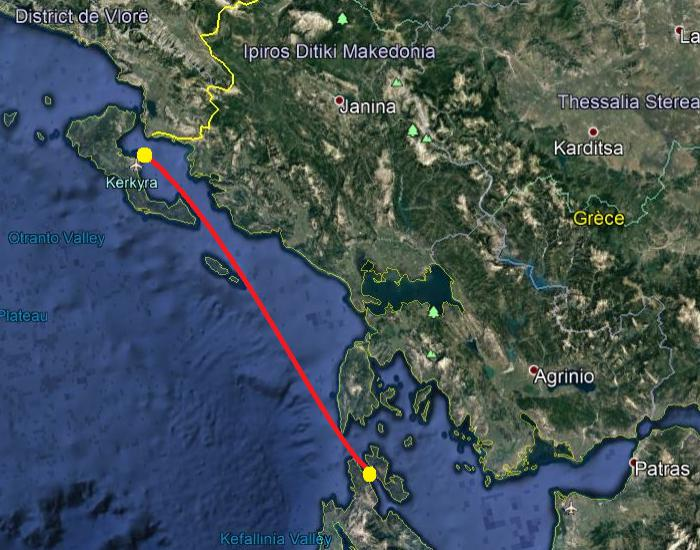
Here again, the speed of nine knots is confirmed
Other notes
The story of the Odyssey is rich in allusions to the gods and their attributes
These are possibly indications of direction to take.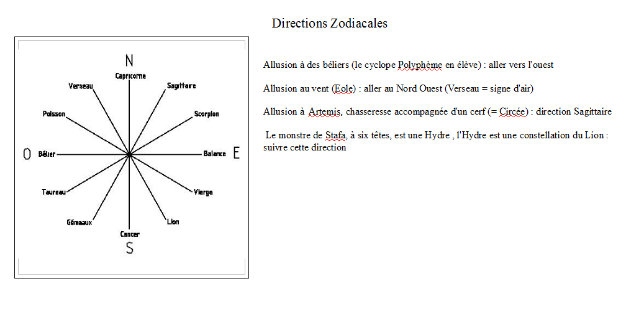 Similarly, the main winds are named:
Similarly, the main winds are named:
Notos: wind from the south
Similarly, the main winds are named:
Notos: wind from the south
Boreas: wind from the north
Zephyr: wind from the west
Euros: wind from the East
(See Wikipedia)
These names indicate the direction taken: the Greek ships, sailing, sail downwind. The narrative was very well able to cross the different linguistic ways, telling the same story, which serves as an immutable framework.
A découvrir aussi
- (in english) The Iliad and the Odyssey
- (in english) The Hellénist Victor Bérard
- (in english) The Odyssey according to Gilbert Pillot
